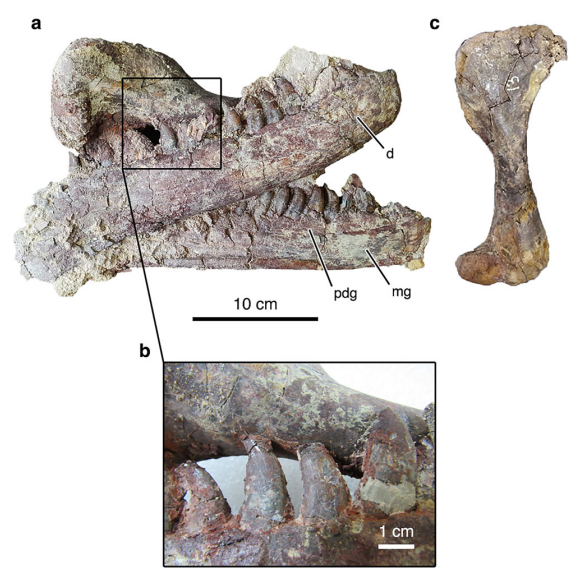The TWZ Newsletter
Weekly insights and analysis on the latest developments in military technology, strategy, and foreign policy.
The U.S. Air Force is currently looking toward a single next-generation airlifter to supplant both the C-17A Globemaster III and the C-5M Galaxy, starting in the mid-2040s. The service is still in the early stages of formulating its requirements for a Next Generation Airlift (NGAL) platform, but has already put emphasis on greater speed and operational flexibility, as well as the ability to better defend against growing threats when on the ground and in the air.
Air Force Gen. John Lamontagne, head of Air Mobility Command (AMC), discussed the current state of NGAL with TWZ and others at a roundtable on the sidelines of the Air & Space Forces Association’s 2025 Air, Space, and Cyber Conference yesterday. As of the start of Fiscal Year 2025, the Air Force had 222 C-17As and 52 C-5Ms in its inventory.

The C-17A, which first entered service in 1995, has a top speed of around 520 miles per hour and a maximum payload capacity of some 82 tons, according to the official Air Force fact sheet. The much larger C-5Ms, which started their careers in the 1980s as C-5Bs and Cs, can carry up to 135 tons of cargo and/or personnel at up to around the same speed. Both types do typically cruise a slower speeds. They can also be refueled in flight to extend their range. Neither the C-17 nor the C-5 are currently in production.

As it stands now, NGAL is “basically a two-for-one to replace both the C-17 and the C-5,” Lamontagne said. “Driving that towards the mid-2040 timeline.”
“When I say two-for-one, we’re probably going to procure one aircraft,” he further clarified later on in the roundtable. “We won’t get a C-5 replacement and a C-17 replacement. There’ll be one airplane that does strategic airlift.”
When it comes to what the Air Force wants in that aircraft, the service has been working through what it calls a capabilities-based assessment (CBA) for NGAL.
“That capabilities-based assessment takes a look at what kind of defense systems do we need? What kind of tactical agility do we need? What kind of servicing do we need?” Lamontagne explained. “So we’ll see what that looks like.”

“As far as what we want in the next[-generation airlift] platform, we want agility, we want speed, we want to be able to operate in a higher threat environment,” he added. This includes “countermeasures that are effective against those threats that are coming from increasingly longer ranges.”
The Air Force has previously warned of the likelihood of a threat environment that includes anti-air missiles with ranges up to 1,000 miles by 2050. China, America’s current chief global competitor, has been particularly active in developing and fielding new air-to-air and surface-to-air missiles with ever greater reach. Russia has also been pursuing new capabilities in this regard.
Lamontagne also highlighted the growing threats American airlifters face on the ground, which are magnified by the time it can take to load and unload payloads, as well as refuel. Last year, AMC notably put out a call for options for future defensive systems that could be integrated directly into its cargo planes, along with its aerial refueling tanker fleets, to help shield them from ever-expanding drone threats, as you can read more about here.
“We’re obviously at a lot of risk on the ground, sitting on the ground somewhere,” the head of AMC explained. “So, [we] don’t want to sit on the ground for three hours. If we could refuel in a lot faster timeline than that, not that it takes three hours to refuel a C-17, but, you know, three minutes would be better than 30 minutes.”

“Right now, we know what we need to do and where we need to go,” he added, referring to the development of new defensive capabilities for aircraft across the command more generally. “We’ve got to develop the defensive systems, continue to develop them, and we’re doing a lot of tests and experimentation on that now, so that we can spiral it [out].”
Lamontagne also noted that the kinds of capabilities, in general terms, the Air Force wants for NGAL don’t necessarily “mix really, really well, and, so, what you prioritize and what you cherish will help define where we go” in terms of a future design.
The potential for NGAL to be a ‘system of systems’ rather than a single platform has been raised in the past. There are immediate questions about how a single aircraft would be able to supplant both the C-17 and the C-5, which are very different aircraft in form and function.
For instance, the C-17, despite its size, offers significant short and rough field performance, allowing it to deliver heavy payloads even in the absence of improved runways. The aircraft was designed to be able to bring in combat-ready forces, including tanks and other heavy armor, to landing zones at or at least near the front lines, as well as drop paratroopers into those same areas.

The C-5 can load cargo and personnel from the nose and tail ends, and do so simultaneously. In addition to just being able to carry larger payload volumes overall compared to the C-17, the Galaxy also offers a unique capability within the U.S. military for moving outsized and unusual payloads by air, including satellites and other space-related items.

Lamontagne acknowledged that NGAL could still potentially include multiple different designs, but also highlighted concerns about whether the Air Force “can afford, grandkids, kids, all of them.” The ability of the Air Force to pay for multiple new fleets of next-generation aircraft amid a slew of other modernization priorities, especially in the nuclear deterrence realm, has been repeatedly called into question in recent years, including by the service’s own top leadership.
NGAL is also currently limited to meeting next-generation strategic airlift requirements. Lamontagne said yesterday that the Air Force has at least two other lines of effort, NGAL-Little and Next Generation Intra-theater Airlift (NGIA), geared toward fulfilling future tactical airlift needs. C-130 variants are the service’s current tactical airlift platforms. Strategic airlift is generally described as being intertheater in nature, while tactical airlift is primarily focused on intratheater missions.

Above all else, Lamontagne stressed the importance of the Air Force being able to eventually retire the C-17 and the C-5 on its terms.
“The C-17 and C-5 … served us well for decades, but they’re not going to fly forever, and so we’d like to recapitalize those on our timeline,” he said. “If we look at what happened with the [C-]141 [Starlifter] after the Gulf War, it basically told us when it was done. We’d like to have a plan in place so when the service life starts to erode on the C-17, whether it’s wings, engines, or more, we’ve got a competition already going.”

It is important to remember that NGAL is hardly the first time the Air Force has explored concepts for advanced cargo aircraft, including stealthy designs and ones with vertical takeoff and landing capability. Much of this work over the years has been tied in with plans for next-generation tankers, something the Air Force is again pursuing now through its separate Next Generation Air Refueling System (NGAS) effort. TWZ has been calling attention to the U.S. military’s ever-growing need for more survivable tankers and airlifters for years now.

During yesterday’s roundtable, Lamontagne cited AMC’s role in the deployment of air and ground-based air defense assets to locations across the Middle East on several occasions last year and earlier this year as examples of the critical importance of strategic airlift and the need to modernize those capabilities. Those movements helped bolster the ability of U.S. forces to defend American interests in the region, as well as Israel. They were key to setting the stage for the Operation Midnight Hammer strikes on nuclear facilities in Iran in June. The C-17 fleet has already been under particular strain for some years now due to heavy demand as a result of a succession of major crises.
“Strategic lift is very critical, as you know, and that is the way that we at TRANSCOM usually initiate our most responsive force. We rely heavily on both the C-5 and the C-17, both of which are aging, both are very capable,” Air Force Gen. Randall Reed, head of that command, also told TWZ and others at a separate roundtable yesterday at the Air, Space, and Cyber Conference. “I am grateful to the Air Force for looking at any and all possible ways to invest in weapon system sustainment to make sure that we can continue to fly those for the near and the midterm.”
“It is also important that we start looking at what comes next. The environment is changing. We will need aircraft that have capabilities that we don’t have today, specifically to make sure that we’re connected,” Reed added. “And the Air Force is working real hard to provide that for us.”

Until NGAL is ready, in whatever form it ultimately takes, the C-17, in particular, will continue to be the Air Force’s strategic airlift workhorse. AMC is already in the process of adding new beyond-line-of-sight communications capabilities to those aircraft. As noted, the command has already been exploring new defensive capabilities for all of its fleets, including protecting them with drone wingmen, as well.
“Right now, I don’t think we’ll need to before the 2040s, but we might need to after that,” Gen. Lamontagne said in response to a question about potentially re-engining the C-17 fleet. “If we do a service life extension or something along those lines, we will certainly need to do something along those lines.”
“Right now, I think the C-17s we have, you know, working with the manufacturer, they’re working on improving, you know, both the efficiency and the performance, so getting a little more fuel efficient with the ones that we have, and a little more time on the wing with the ones that we have,” he added. “Right now, I think we’re in a pretty good place.”
Earlier this year, Boeing said it was in the very early stage of talks with at least one potential customer about restarting production of the C-17, or starting to produce a new derivative of that design. The C-17 line was shuttered in 2015.

“There are no current plans to restart the C-17,” Lamontagne said, but acknowledged it is something that has been discussed. “I think one step at a time, capabilities-based assessment, analysis of alternatives, competition.”
“[I’m] hoping, in the near term, next couple of years, few years, I’d say, [to] have another analysis of alternatives, this time on the next generation airlifter, instead of the next generation air refueling system,” he also said during the roundtable.
Overall, the Air Force is still in the early stages of the NGAL effort, but a path forward to a successor to the C-17 and the C-5 is now starting to take greater shape.
Contact the author: joe@twz.com







